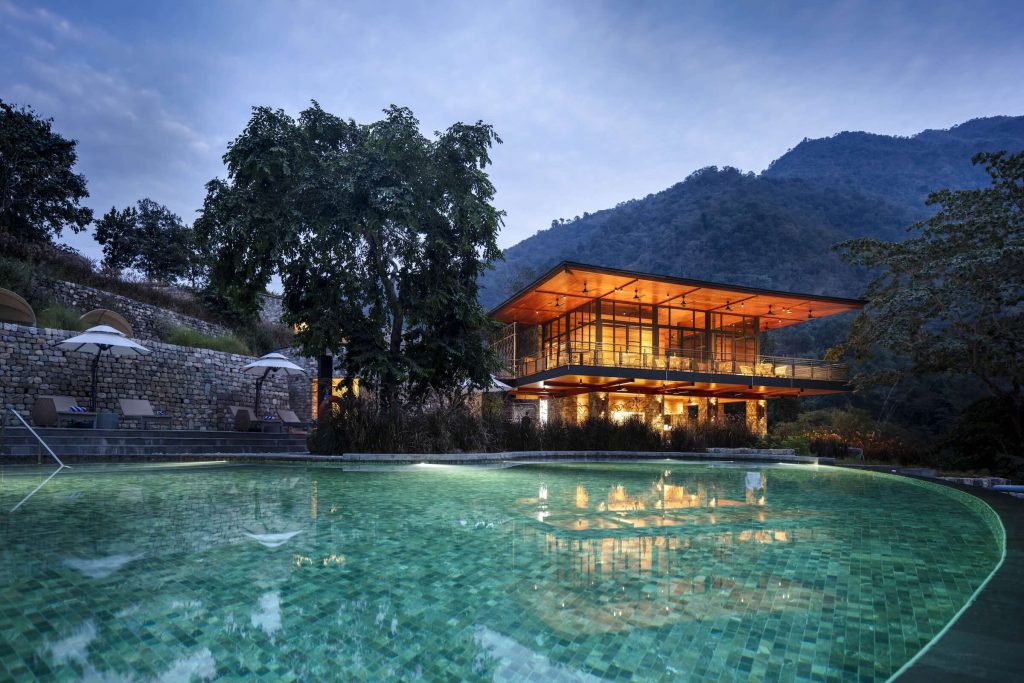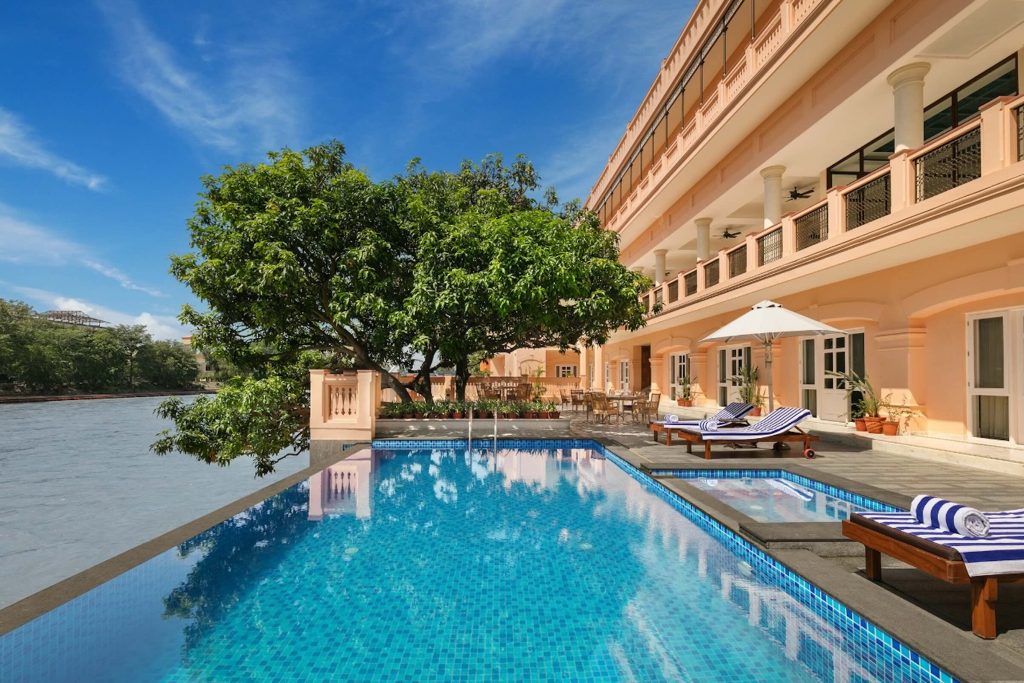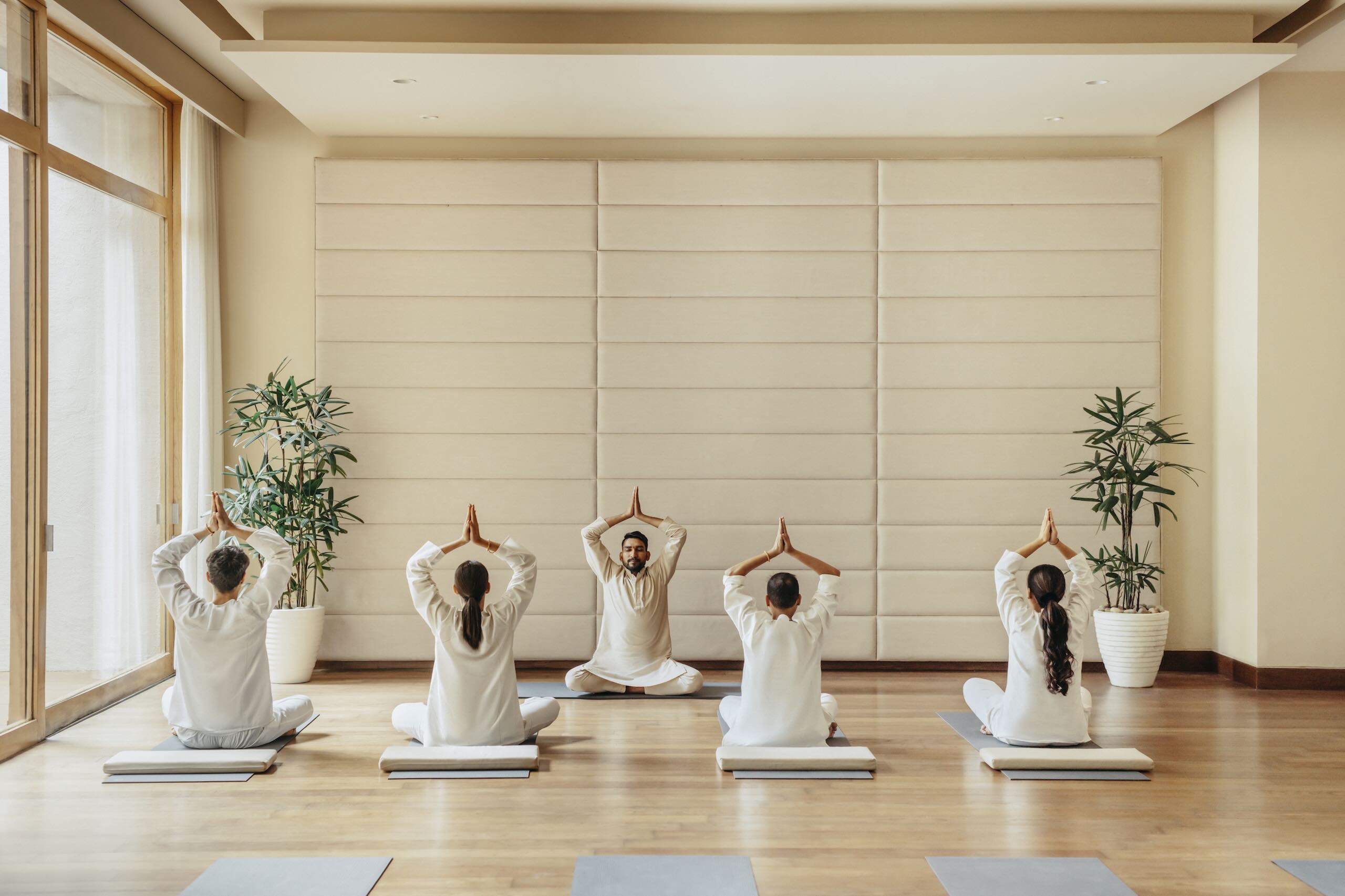Why yoga? It could be described “an ancient practice that aims to create union between body, mind, and spirit, and between the individual self and universal consciousness”—that’s what yogapedia.com says, but of course it’s biased. Non-afficionados might say it involves a rolled-up mat taking up too much space in the too-small closet of a hotel room. More universally appropriate, it is exercise that is dependent on breath control that is, in an increasingly frenetic world of technology, sure to calm and simultaneously elevate the ability to play, be tourist, and work. Yoga’s origins can be traced back over 5,000 years to texts mentioning exercises to clear physical and emotional obstacles in the body to free breath.
Without doubt there are many, many benefits of a yoga practice from a health and wellness perspective, says Neil Jacobs, CEO of Six Senses. “Yoga makes you happier and brings you peace of mind—everything else is incremental.” All Six Senses properties offer complimentary classes, always accompanied by breathwork and meditation, and sometimes by aerial yoga, energy treatments, and yogic massage. Six Senses had always included yoga in its wellness offerings, but it really moved to the practice’s pole position in 2022 when it took over management of Veer Singh’s 84-room Vana Wellness Resort in Uttarakhand, India. Northern India has every right to claim ownership of yoga, and today, Rishikesh, skirting along the upper Ganges 25 miles below the confluence that forms the mighty Ganges, claims to be capital city of yoga.

Image courtesy of Taj Rishikesh Resort & Spa
45 minutes’ drive from Rishikesh, the 74-room Taj Rishikesh Resort & Spa has daily free, hour-long sessions at 8 am. One day there, I shared the yoga pavilion with an American crypto king now running lengthy pilgrimage tours, say from Stonehenge to Ephesus. We stretched and breathed and chanted and we, and the world, felt better. Eight hours later, we met up again, at afternoon tea, also complimentary for all hotel guests. With strategic views far down to the river, we drank masala chai, had our hands temporarily painted in henna, and our palms read. Spirituality means so many things.
Two other Taj-family Rishikesh properties should be mentioned. Six miles along from the Taj is Anand Kashi, a 24-roomer that is part of IHCL’s Seleqtions soft-brand. It was once the summer residence of the maharajas of Tehri Garhwal, whose main home is now Ananda in the Himalayas, which is another (non-Taj) wellness destination half an hour away (Anand Kashi is today part of the Forest Essentials’ portfolio. India’s leading beauty-toiletries brand is cleverly and strategically masterminded by former Standard Chartered banker Sam Bedi, son of Forest Essentials’ founder Mira Kulkarni, who was gifted the resort by the current maharaja of Tehri Garhwal). Anand Kashi’s uncovered yoga platform is the venue, every morning, for one of the most impactful male teachers on the circuit. He has an easily audible voice, he explains the benefits of each movement, and he ends each session with raucous laughing for a final clearance of the airwaves.

Image courtesy of Pilibhit House
On the other side of the Ganges, in Haridwar, is the 35-room Pilibhit House, literally cantilevered over the river (take 38 stone steps down from the open-air lobby right into the water, fabulously convenient for the sunset aarti ceremony that almost becomes another daily must, along with yoga, in this part of India). Pilibhit House, named for the region where the hotel’s four owning brothers come from, uses an outside contractor specialising in the yoga stretching that is particularly important for guests here. Note, by the way, that because of its proximity to four important temples to visit—all of which are well worth visiting—Pilibhit House is alcohol- and meat-free.









